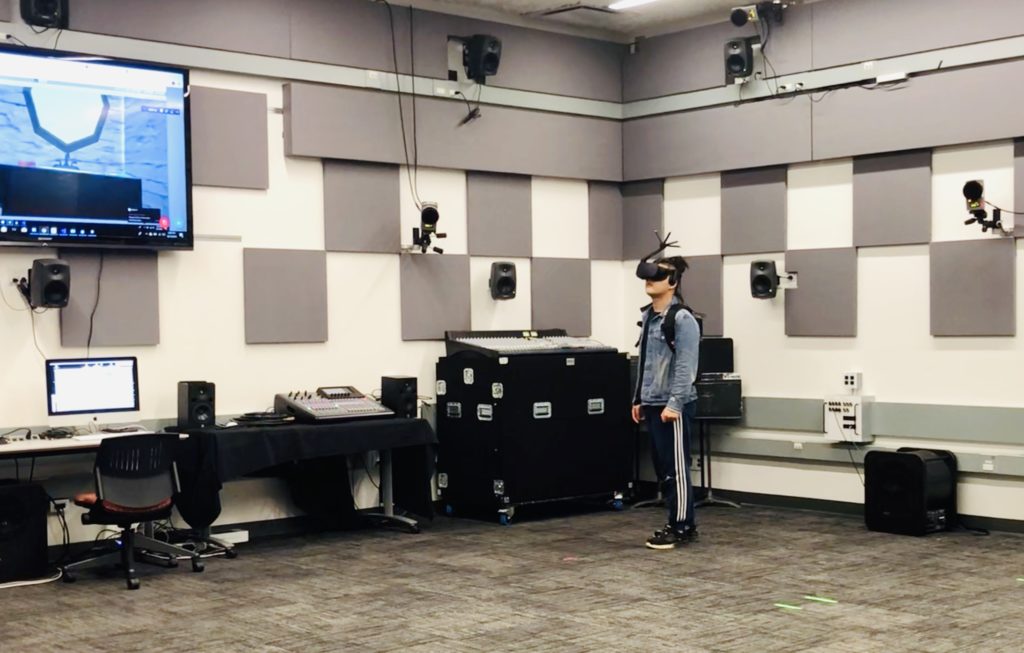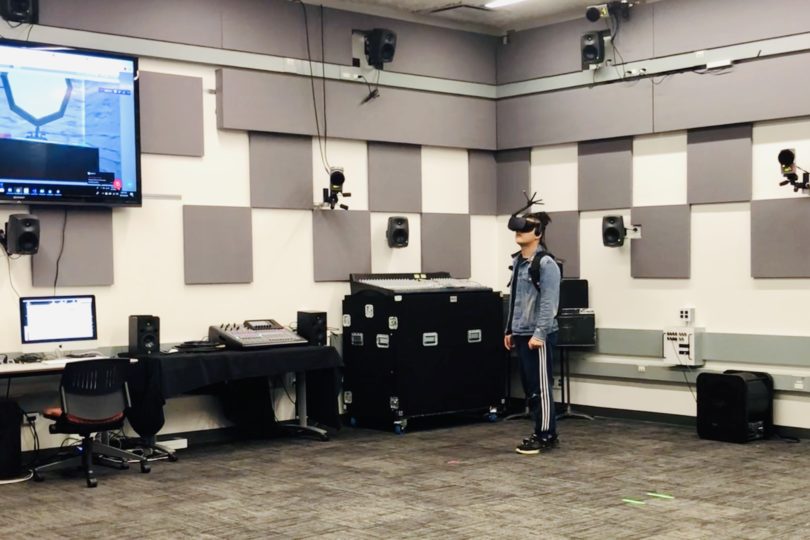During this semester, I worked with a team to deliver mental disorder experiences in virtual reality. Specifically, I was heavily involved in the process of design the VR interactions using Unity. I learned a lot about unity and game engines in general, including game physics, collision and trigger events, mesh, shaders and terrain. On top of that, integrating a 3D environment in VR also taught me a lot, absolute vs relative positioning, motion sickness, VR interactions and so on. I think these skills will help me a lot in the future.
Besides these fundamental skills and understanding of VR, I also learned to add creative element into the project. Creative could be as simple as design a cool art assets, or, to have a script that is designed with original ideas. I wrote a sound script that could trigger sound based on the collision velocity, and a script generated particle that stimulate fire. These script integrated well into the project.
Collaborating in a team of four made our team work efficiently. Each of us is in charge of a specific part of the project and we keep track of our progress every time we meet. But there are also downsides of working in a team, for example, if someone is behind on their progress, the overall quality of the project will not meet our expectation. We had problems with sounds and perform studio integration during our milestone 3 presentation and it is frustrating. However, It made me realize that a team need to define a bottomline and to have a backup plan. If the motion capture system in perform studio doesn’t work, we will use the standard oculus lighthouse instead, and if the 3d audio doesn’t work, we will use the default 2d audio as a backup.

PC: Heather Cole @hlcole7
We had high expectations when we designed the project, including a realistic environment, mental disorder stimulation, integration with motion capture system, and 3D sounds based on location. We initially gathered all the materials, softwares and equipments. We successfully tested all the systems individually and all of them are working well. But we run into problems when we tried to integrate all the systems together and that made our actual progress fall behind out expectation.
I wish I knew about my capability before I started the project. I knew little about Unity at the beginning and it took me a long while to learn the software. That causes some delays on the overall progress.
Creativity is still vague in my opinion, everyone has a different perspective on creativity. I learned that communication is an effective way to facilitate creativity. Specifically in this class, I love to read through the feedbacks from milestone presentation, it offers me diverse ways to interpret my project, and thus, allows me to modify my project in ways that I could never thought of by myself.
In terms of evaluating creativity, I also believe that everyone has a different perspective. Just by looking through the comments, I can tell that people interpret my project in quit diverse ways.
Creative computing is a huge topic. All of the components of creative computing make it the creative design flexible. Creativity could be elaborated in the hardware installation, the software integration, people who operates and the location where it took place. There are so many possibilities for each of these processes and in general, I strongly believe that computer and technology are fantastic and flexible medias to deliver an opinion, a thought, a creative mind.
Liveness in definitely a key element in creativity, since it adds up the spontaneous and unexpected factors to a creative practice. In our team project, being able to spontaneously trigger events made the project more interesting and added a lot of possibilities to it. On top of that, ambiguity could also be a part of liveness, since being live could trigger unpredictable events.
During this semester, I read Style and Constraint in Electronic Musical Instruments by researchers at Queen’s University. This paper definitely gave me a lot of insights on the role of constraints in creativity. In practice, creativity is evaluated by the two observable properties, structure, as qualitative states, and style, as quantitative realization of the structure. Constraint was observed to play an important role in studying structure and style, an extremely constrained design makes the structure apparent, and limit the degree of stylistic variation; a loosely constrained design makes the structure difficult to recognize, but lead to great diversity of styles. These key concepts made me understood the importance of constraint.
This course definitely taught both technical skills and conceptual ideas. I learned to operate VR equipments, design games in Unity, collaborate in a team, and to reflect the role of live, ambiguity, constraint when designing a creative project.
My takeaway message from this course is to always be prepared, learn as much as you can when you have the chance, so you wont be frustrated when you need that skill.
